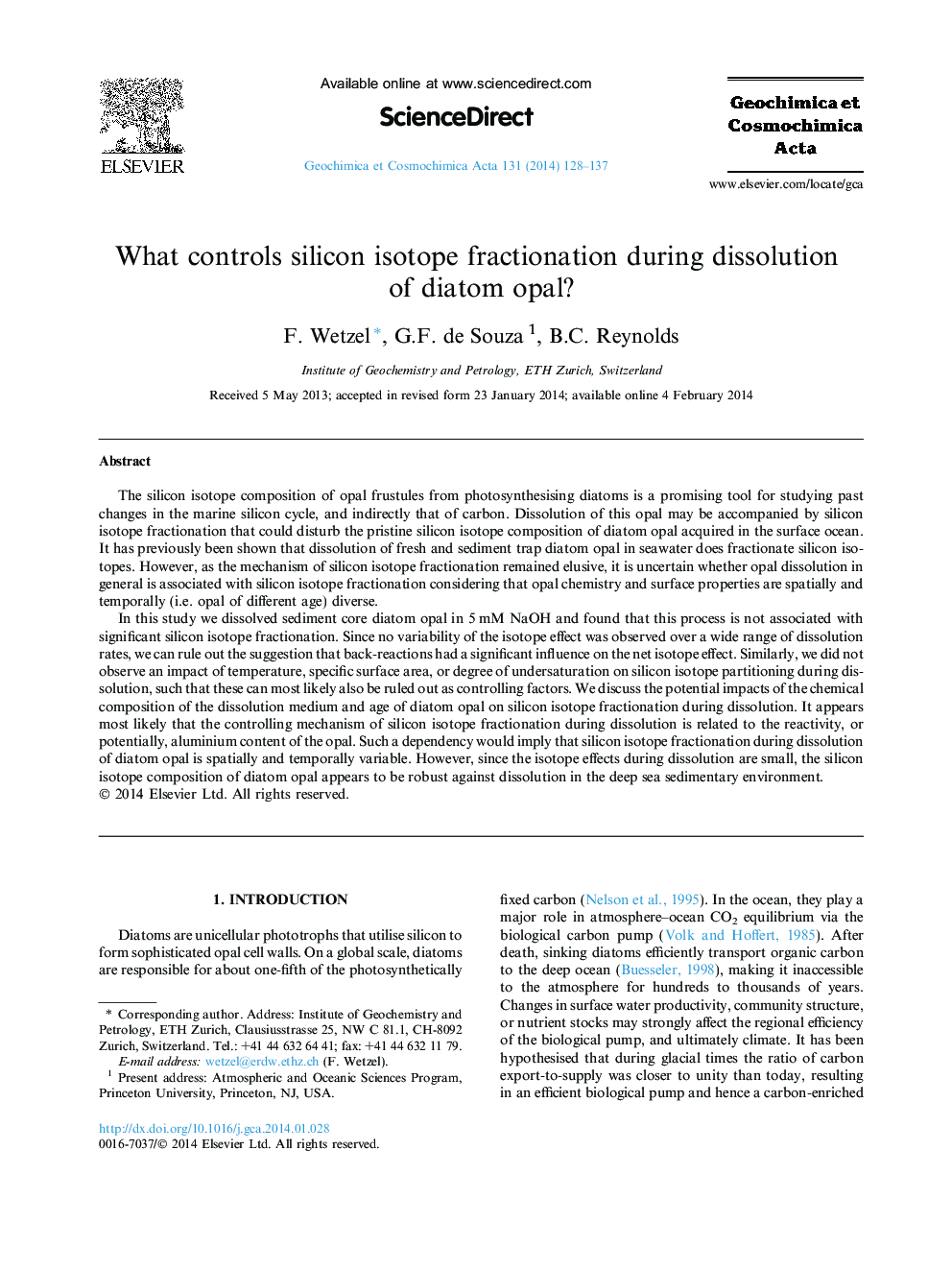| Article ID | Journal | Published Year | Pages | File Type |
|---|---|---|---|---|
| 6438627 | Geochimica et Cosmochimica Acta | 2014 | 10 Pages |
Abstract
In this study we dissolved sediment core diatom opal in 5Â mM NaOH and found that this process is not associated with significant silicon isotope fractionation. Since no variability of the isotope effect was observed over a wide range of dissolution rates, we can rule out the suggestion that back-reactions had a significant influence on the net isotope effect. Similarly, we did not observe an impact of temperature, specific surface area, or degree of undersaturation on silicon isotope partitioning during dissolution, such that these can most likely also be ruled out as controlling factors. We discuss the potential impacts of the chemical composition of the dissolution medium and age of diatom opal on silicon isotope fractionation during dissolution. It appears most likely that the controlling mechanism of silicon isotope fractionation during dissolution is related to the reactivity, or potentially, aluminium content of the opal. Such a dependency would imply that silicon isotope fractionation during dissolution of diatom opal is spatially and temporally variable. However, since the isotope effects during dissolution are small, the silicon isotope composition of diatom opal appears to be robust against dissolution in the deep sea sedimentary environment.
Related Topics
Physical Sciences and Engineering
Earth and Planetary Sciences
Geochemistry and Petrology
Authors
F. Wetzel, G.F. de Souza, B.C. Reynolds,
